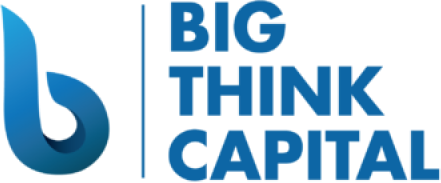Navigating the 2025 Inflation Spike: Smart Strategies for Small Business Owners to Maintain Financial Health
Estimated Reading Time: 5 minutes
- Understand the current inflation landscape: Recognize how rising costs affect your business operations.
- Optimize your pricing strategy: Adjust prices thoughtfully to maintain profitability.
- Focus on cost management: Tighten your budget while ensuring quality service.
- Explore alternative financing options: Leverage various funding solutions to address cash flow needs.
- Enhance your financial forecasting: Make informed decisions with accurate financial insights.
Table of Contents
- Understanding the Current Inflation Landscape
- Strategy 1: Optimize Your Pricing Strategy
- Strategy 2: Focus on Cost Management
- Strategy 3: Explore Alternative Financing Options
- Strategy 4: Enhance Your Financial Forecasting
- Conclusion: Preparing for the Road Ahead
- FAQ
Understanding the Current Inflation Landscape
Inflation affects various aspects of business operations, from rising costs of materials to increased overhead. Here are some critical aspects of the current inflation scenario for small businesses:
- Cost of Goods Sold: Higher raw material costs can squeeze profit margins. Business owners must keep an eye on purchasing trends and renegotiate contracts where possible.
- Wage Pressures: As the cost of living increases, employees will seek higher wages. It is essential to balance retaining talent with controlling payroll expenses.
- Financing Costs: With the Federal Reserve likely to increase interest rates in response to inflation, borrowing costs for small businesses might rise, impacting your access to capital.
Strategy 1: Optimize Your Pricing Strategy
In an inflationary environment, businesses may find that they must adjust pricing to maintain profitability. Here’s how to do it effectively:
- Conduct Market Research: Analyze competitor pricing and customer perceptions. Understand what your customers value and how much they are willing to pay.
- Communicate Transparently: If you plan a price increase, communicating honestly with your customers about why the change is necessary can help maintain trust.
- Consider Bundling Products and Services: Offering packages at a slightly discounted rate can drive sales while countering inflation effects.
Strategy 2: Focus on Cost Management
Tightening your budget is essential in times of inflation. Consider these cost management strategies:
- Review All Expenses: Regularly analyze your operating expenses. Identify non-essential costs that can be reduced or eliminated.
- Negotiate with Suppliers: Build strong relationships with vendors and negotiate better rates. If suppliers are also feeling the impact of inflation, there may be room for compromise on pricing.
- Leverage Technology: Invest in technology that can streamline operations and reduce costs in the long run. This might require upfront investment but can yield significant savings over time.
Strategy 3: Explore Alternative Financing Options
As small business owners attempt to navigate rising costs and potential cash flow challenges, having access to funding can be a game-changer. Here are some financing options to consider:
- Working Capital Advances: These can provide immediate access to funds to address short-term cash needs. They are particularly beneficial if your business experiences fluctuating revenue.
- Equipment Financing: If your business relies on essential equipment, consider financing options that allow you to purchase or lease without significant upfront costs.
- SBA Loans: These federally backed loans can offer favorable terms, particularly for small businesses looking for long-term financing options.
At Big Think Capital, we specialize in connecting small businesses with the right financing solutions. Our expert team can help you navigate the lending landscape to find the most appropriate funding options.
Strategy 4: Enhance Your Financial Forecasting
In an inflationary market, having a clear picture of your finances is crucial. Strengthening your financial forecasting allows you to make informed decisions:
- Update Your Financial Projections: Take into account potential changes in costs and revenues. Aim for realistic projections that can guide your decision-making strategy.
- Monitor Cash Flow Regularly: Keep an eye on your cash flow statements. A precise understanding of your cash position allows you to anticipate challenges and seek funding proactively if needed.
- Use Financial Management Software: Technologies can help automate your forecasting process, providing you with real-time insights into your business finances.
Conclusion: Preparing for the Road Ahead
Navigating the 2025 inflation spike requires strategic foresight, adaptability, and the right financial support. By optimizing pricing strategies, managing costs wisely, exploring alternative financing methods, and enhancing financial forecasting, you will be better equipped to handle these economic challenges.
If you are a small business owner feeling uncertain about how to proceed, remember that you do not have to navigate these waters alone. At Big Think Capital, we are dedicated to empowering small businesses with the funding they need to thrive despite the challenges posed by inflation.
To learn more about how our funding solutions can help you maintain financial health during this inflationary period, visit us at bigthinkcapital.com or speak with one of our funding experts today. Your business’s resilience starts with informed financial decisions and trusted support.
FAQ
- What is inflation and how does it affect small businesses? Inflation refers to the rate at which the general level of prices for goods and services rises, eroding purchasing power. It can lead to increased costs of materials and labor for small businesses.
- How can I determine the right pricing for my products during inflation? Conduct market research, analyze competitor pricing, and understand customer value perceptions to set your prices competitively.
- What financing options are available for small businesses facing cash flow issues? Small businesses can explore options like working capital advances, equipment financing, and SBA loans.






